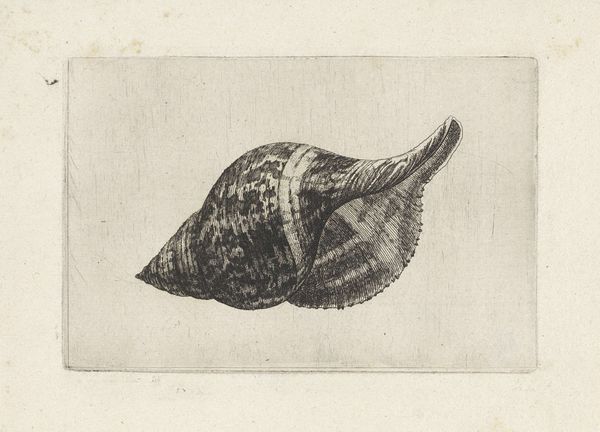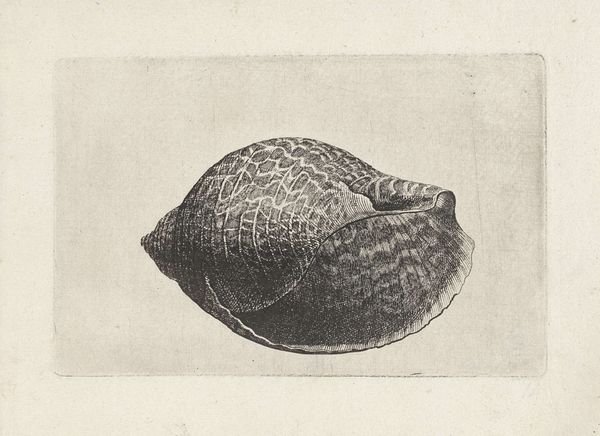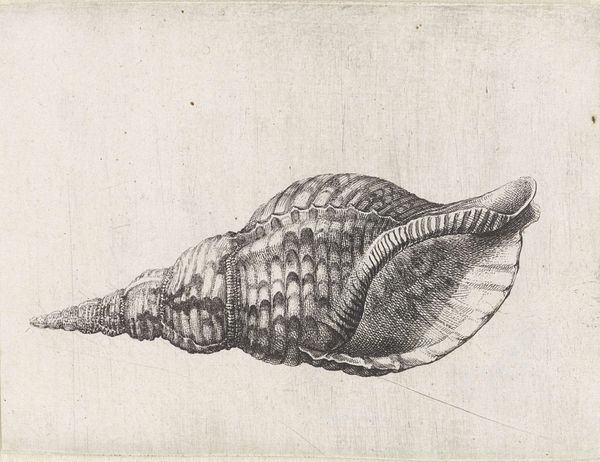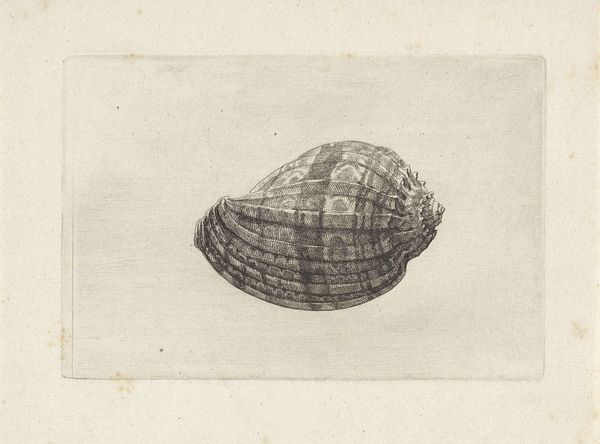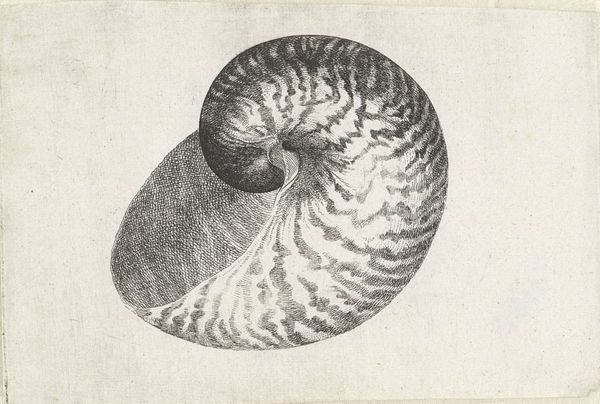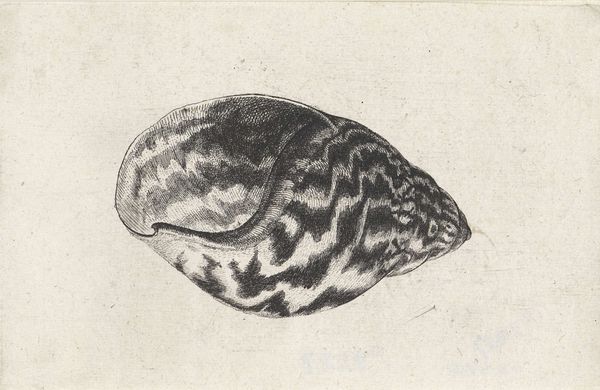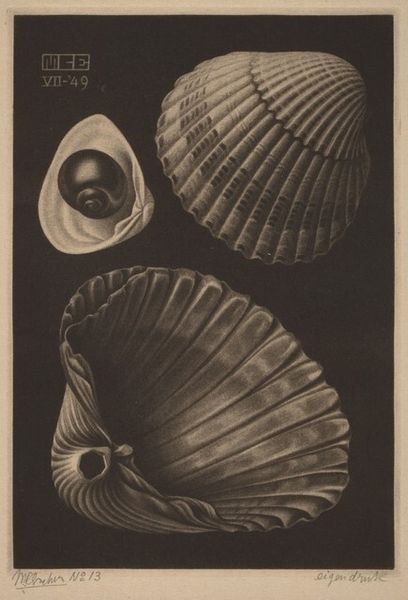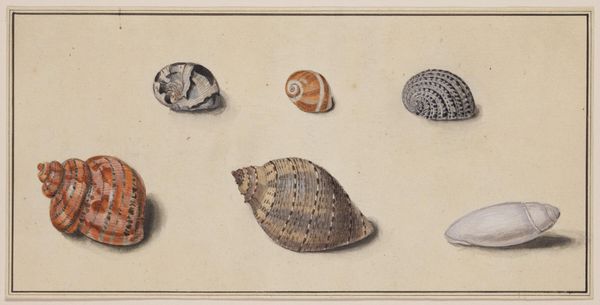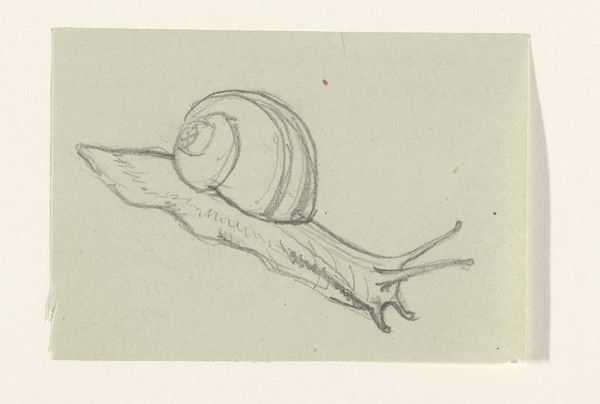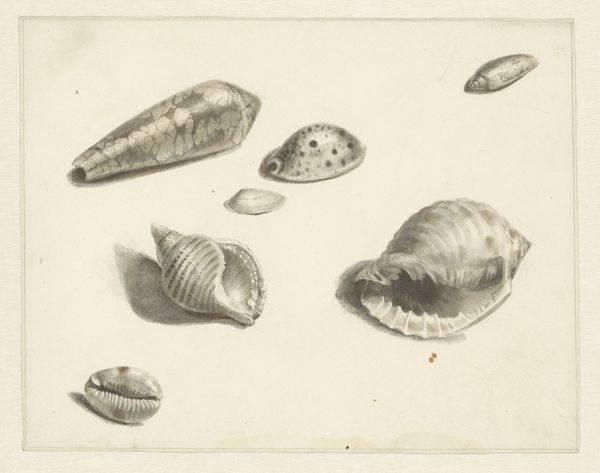
print, engraving
#
baroque
# print
#
old engraving style
#
form
#
personal sketchbook
#
line
#
sketchbook drawing
#
sketchbook art
#
engraving
Dimensions: height 81 mm, width 141 mm
Copyright: Rijks Museum: Open Domain
Wenceslaus Hollar created this print of a shell, tonna dolium, sometime in the 17th century. Note the striking composition: Hollar uses the form of the shell to create a vortex, pulling the eye into its spiraling depths. The texture, meticulously rendered through hatching and cross-hatching, gives the shell a tactile presence, almost as if we could reach out and touch its rough exterior. Hollar's choice of subject and his precise technique speak to the burgeoning scientific interests of his time. The shell, a natural object, becomes an object of study, dissected and displayed for its intricate structure. But it's not just about scientific accuracy. Hollar's artistry transforms the shell into a symbol, perhaps of nature's endless variety, or the hidden beauty within the mundane. Consider the interplay between the spiraling form and the rigid grid-like pattern on the shell's surface. This tension between organic form and geometric order encapsulates the broader intellectual currents of the 17th century, a time when artists and scientists alike were striving to understand the underlying order of the natural world.
Comments
No comments
Be the first to comment and join the conversation on the ultimate creative platform.

